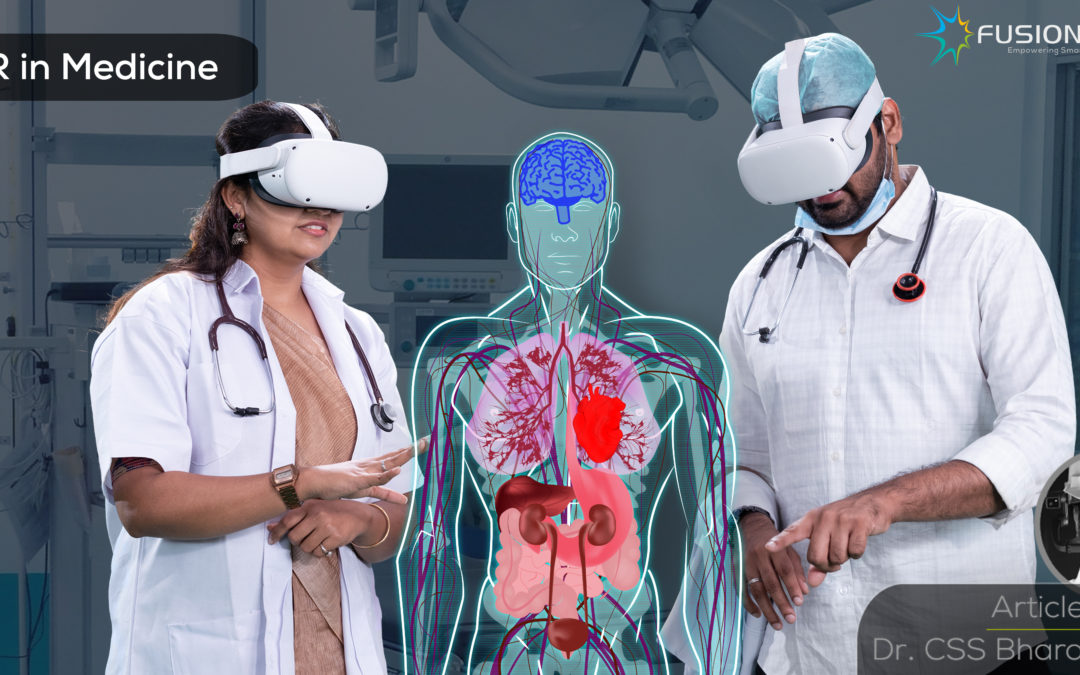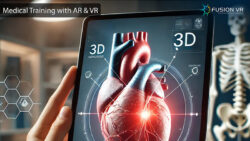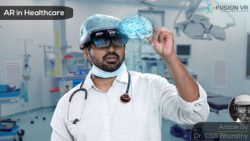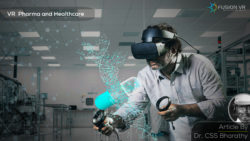There was a time when medicine and engineering were seen to be at two extremes. One needed mathematics while the other didn’t. It’s easy to guess if you’re a parent or a teenager. The reality, however, is that medicine and engineering are very much integrated.
Healthcare has grown by leaps and bounds because of technologies that have helped better diagnose and comprehensive treatments – invasive and non-invasive. These technologies have helped to address both physical and mental ailments. In the past few years, virtual reality has grown in popularity as an entertainment device, but it has steadily found exciting applications in the medical world.
So, what is virtual reality? VR helps create an immersive digital environment that can be experienced, explored, and engaged to perform various activities. Users don a head-mounted device that completely covers the eyes and tricks the user into believing that they have entered a different world altogether. This virtual environment can be created and navigated in to experience something impossible, difficult, dangerous or just too expensive.
Except for what is on the surface of the human body, there isn’t much that we can see or can be explored. We rely on drawings and videos that can provide some partial insight. 3D models take it several steps further, but they will not be that realistic or immersive.
There will always exist a separation that gives the feeling that it’s not real. Bringing in VR and the immersive nature of this technology delivers an unbelievable experience. There is a great deal of research into potential virtual reality applications in medicine. The greatest application Of VR shortly is in medical education, rehabilitation, palliative care (pain management), surgical training etc.
Let’s look at each area to understand what these possibilities are for virtual reality and medicine. It’s important to note that developing and commercialising a few applications successfully will spur the development of more use cases, solutions and widespread adoption.
Virtual Reality and the Transformation of Medical Education
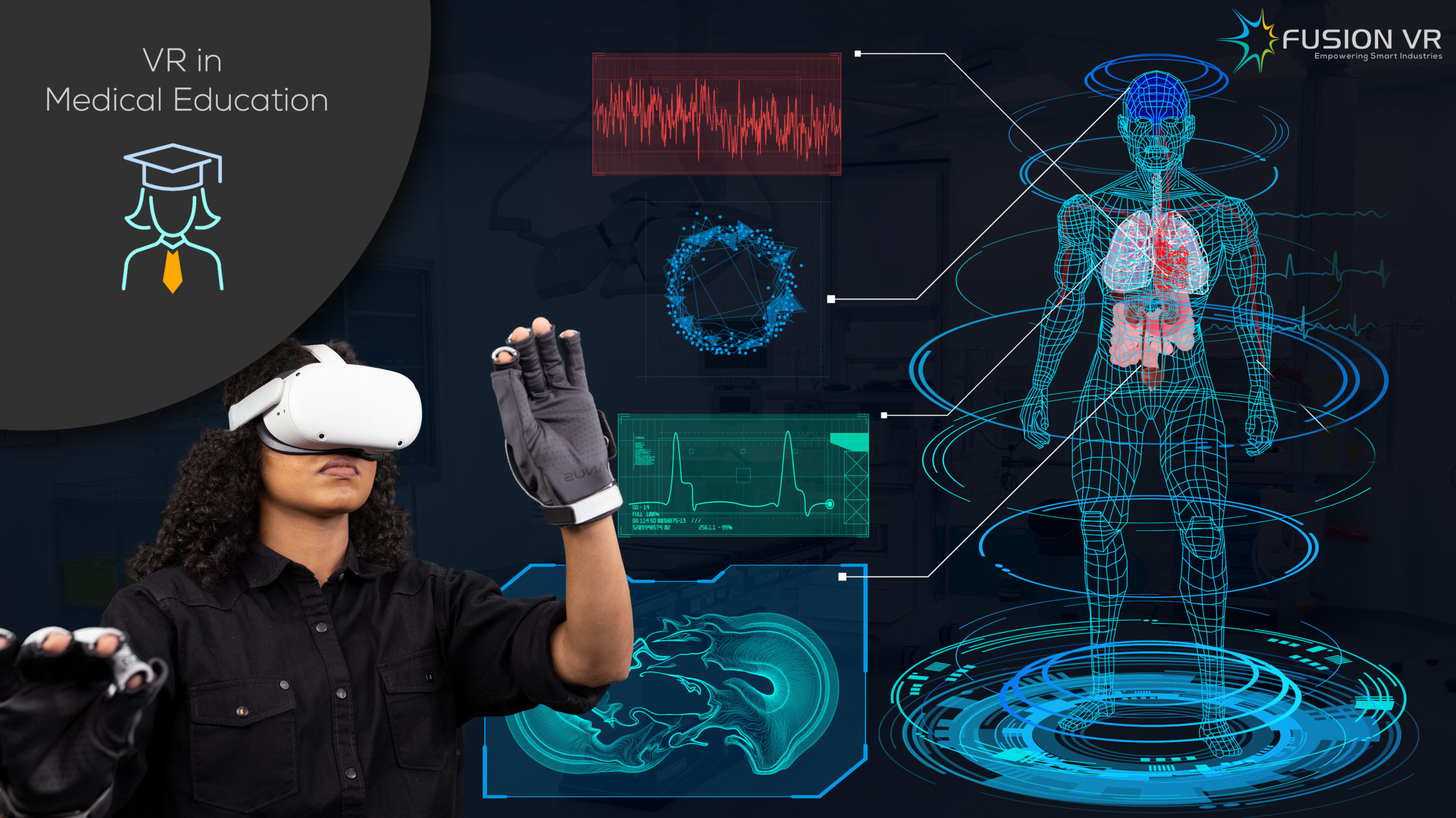
In medical education, studying anatomy is now available to students that never existed a decade ago. VR learning is swift and ensures greater retention of the knowledge imparted compared to traditional classroom approaches. VR enables students to learn about human anatomy at The macroscopic and microscopic levels.
One can now clearly visualise how organs look in real humans when cadavers are Opened up and also view a representation in different colours to indicate the various parts and components of that organ. The VR experience is unique in that it’s something that appears to be actually in front of your eyes.
The hyper-realistic modelling and texturing lead students to believe they see it in the real world. More details about the organ are presented as textual information or animated fashion. The internal structures can be viewed in X-ray mode, exploded mode or in layers where what lives behind is revealed as each layer is removed.
Each part can be sliced or sectioned as desired. Learning anatomy this way is impossible today as it can be expensive, time-consuming and logistically challenging. This kind of enhanced understanding is virtually impossible to leave the student’s mind and will benefit them with competence and confidence to handle cases in the real world.
Virtual Reality in Physical Therapy: Is It Worth It?
Moving away from education to therapy, VR is helping to rehabilitate stroke victims whose movements are impaired. Specially designed VR solutions augment traditional rehabilitation treatments to ensure better outcomes with arm and body training and help restore gait. VR rehabilitation places the patient in a conducive virtual environment to help reduce stress, anxiety and chronic pain.
The VR therapies are designed to encourage, motivate and extend physical rehabilitation sessions compared to conventional biological approaches. Typical daily activities are included and gamified to promote participation and involvement. Patients are placed in a more pleasant and positive virtual environment and can recover faster. Patients’ progress is captured accurately, which helps adjust the recovery program and share it with patients for more fantastic encouragement.
An area of high promise is the use of VR for pain management. Last year, a home VR device was used for chronic lower back pain. This VR therapy immerses the patient in peaceful and beautiful settings that are pleasing to the senses. These scenarios can be computer-generated or borrowed from natural places.
This approach has enabled a sense of distraction that moves the mind away from pain and provides relief for a specific time duration. While research is ongoing, this would help millions of people in the future who suffer silently from various forms of chronic pain.
VR training approaches have been described in many studies worldwide as shortening training duration and increasing employee confidence to perform assigned tasks. This is also the experience when it comes to surgical training. It becomes beneficial when training surgeons and the supporting teams on new procedures and those that are not performed frequently. Surgeons, like all professionals, believe that practice makes perfect, particularly when errors could lead to severe consequences for their patients.
The David Geffen School of Medicine at UCLA has reported that VR training improves surgical performance by 230%. The VR training reduces cost and time as such practice does not require the use of an actual operating room. It can be repeated multiple times until the surgeons do the procedure flawlessly.
It also allows other experts to assess and provide feedback on improvements and enhancements that deliver positive patient healthcare outcomes. It also allows surgeons to virtually explore various approaches before arriving at the best possible one for patients and customise it where needed. Knowing that hospitals incorporate VR medical training that is robust increases patients’ confidence and reduces pre-operative anxiety.
These are just a few prominent virtual reality medical applications with immense potential in the future. With the growth in popularity of VR devices and their recent affordability, technology and healthcare professionals are racing to identify more use cases and develop comprehensive solutions that benefit the human race. Closer collaboration soon is necessary between healthcare companies, medical colleges and VR technology providers to create solutions that deliver the best results in healthcare for the 21st century.

